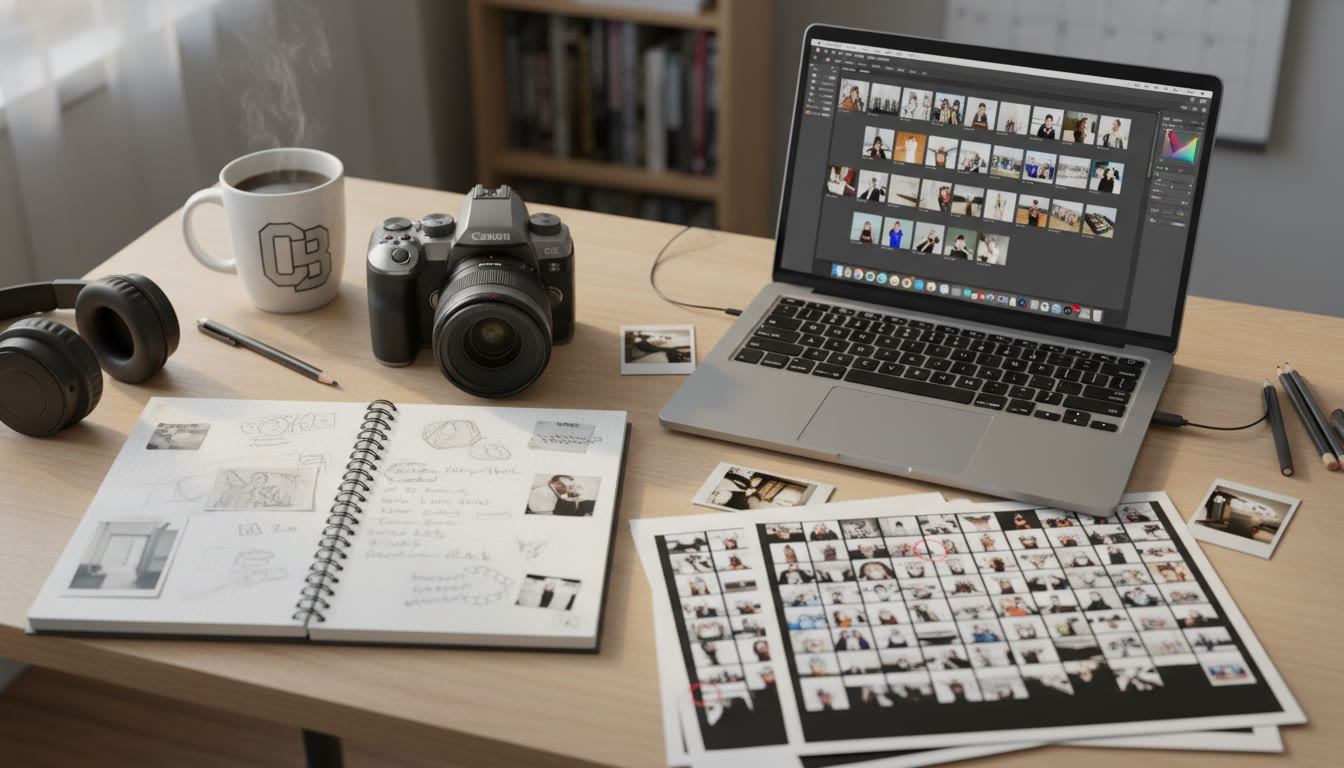Why Your AP Portfolio Matters — Especially for RIT Applicants
Applying to Rochester Institute of Technology (RIT) as a design or photography hopeful? Your AP portfolio isn’t just a test score or a checkbox — it’s a first conversation with the admissions committee about who you are as a maker. For creative programs, colleges like RIT look beyond grades to see your thinking process, technical skill, and originality. An AP Art and Design or AP Drawing portfolio (and the AP 2-D or AP 3-D equivalents when relevant) can show that you’ve already started doing the creative work that college-level programs expect.
What Admissions Are Looking For
Admissions officers and faculty typically look for a combination of technical competence, conceptual clarity, and growth. Your portfolio should show:
- Consistent technical skill (composition, exposure, printing or editing decisions for photo; line, value, form for drawing/design).
- A clear point of view or recurring theme that ties different works together.
- Evidence of experimentation and risk-taking—work that shows you pushed beyond the obvious.
- Thoughtful presentation, including captions or process notes that explain decisions.

Understanding the AP Art and Design Portfolio Options
The College Board offers AP portfolio options that are relevant for prospective design and photography students. While the official names and formats can be checked on the College Board site, the core options you should know are:
- AP Art and Design: 2-D Design — Focuses on composition, design principles, and visual problem solving (often relevant for graphic design, advertising, and digital practices).
- AP Art and Design: 3-D Design — For sculptural or three-dimensional thinking (less common for photo applicants, but relevant if you do installation or tactile work).
- AP Art and Design: Drawing — Emphasizes observational skill, mark-making, and conceptual drawing studies (closely linked to fine art and many design fundamentals).
- AP Photography (where available): Some portfolios or school-based programs emphasize photographic practice, though many photography students submit under 2-D Design or Drawing depending on how they frame their work.
Which to choose? If your work is primarily photographs—series, darkroom or digital prints, contact sheets, and editing decisions—treat it as a 2-D Design or photography-focused submission, with attention to sequencing and thematic coherence. If your practice includes a lot of drawing studies, include those under the Drawing portfolio.
AP Portfolio Sections to Plan
Most AP portfolios consist of three primary components (the exact names may vary):
- Quality: The strongest, most refined pieces that demonstrate technical and conceptual mastery.
- Concentration: A body of work unified by an idea, approach, or visual investigation—this is where your voice shines.
- Breadth: Examples that show your range of techniques, media, and problem-solving strategies.
Step-by-Step Timeline: From Idea to Submission
Start early. Creative portfolios are iterative; they benefit from months of reflection, revision, and experimentation. Here’s a suggested timeline that fits a typical school year for students aiming to submit strong AP portfolios and apply to RIT.
| Timeframe | Focus | Key Actions |
|---|---|---|
| Summer (Before Senior Year) | Research & Exploration | Sketch ideas, take photo walks, experiment with new media, start a visual journal, and gather inspiration from RIT program highlights and faculty focuses. |
| September–October | Develop Concentration | Select a unifying theme; shoot/build drafts; begin sequencing and annotating process notes. |
| November–December | Refinement | Edit and re-edit; print test images if applicable; solicit feedback from teachers, mentors, or a tutor; revise based on critique. |
| January–February | Finalize Quality Pieces | Complete high-quality prints, finalize labels/captions, and prepare digital files per AP submission specs. |
| March–April | Submit Portfolio & Exam | Complete any required AP Art and Design exam processes; double-check all files and upload early where possible. |
Why This Timeline Works
It leaves room for iteration and feedback—two things that elevate an average portfolio to an outstanding one. Also, it aligns the portfolio completion with college application deadlines so you can share revised work in your supplemental materials or during interviews.
Building a Strong Concentration: Tell a Story
A concentration isn’t just a collection of similar images; it’s an investigation. Think of it as a mini research project. Here’s how to craft a compelling concentration.
Choose a Motivating Question
Your concentration should answer a question or explore a concern. For example:
- How does light shape identity in urban portraiture?
- What happens when analog and digital printing methods collide?
- How can everyday objects be redesigned to tell a new story?
Document Process, Not Just Finished Pieces
Admissions love to see the thinking behind decisions. Include process shots, sketches, contact sheets, and short captions that explain how a piece evolved. These artifacts show problem-solving and dedication—two qualities RIT values highly.
Technical Tips for Design and Photography Portfolios
Technical skill is non-negotiable—sloppy exposure, poor composition, or inconsistent printing undermines even the most original ideas. Here are practical pointers that create professional results.
Photography-Specific Tips
- Master exposure and focus: Practice shooting in manual when you can; learn to read histograms and use spot metering for tricky light.
- Print quality matters: Whether darkroom or inkjet, control your output. Calibration and proper paper choice elevate the work.
- Sequence with intention: Start with a strong opening image and sequence toward a clear closing image. Think in chapters.
Design & Drawing Tips
- Show iterations: For design problems, include thumbnails, wireframes, and finished comps so reviewers see the design thinking.
- Maintain visual cohesion: Use consistent framing and file presentation so the viewer isn’t distracted by formatting issues.
- Balance concept with craft: A clever idea needs careful execution to be persuasive.
Presentation: How to Make Your Portfolio Read Like a Conversation
Presentation is where you control the viewer’s experience. Think of your portfolio as a short exhibition designed to guide a viewer through your ideas.
Sequencing Strategies
- Open strong: Lead with a work that is technically solid and conceptually intriguing.
- Group related pieces: Use mini-series to create rhythm and momentum.
- End with a memorable statement: A final piece that ties the concentration together leaves a lasting impression.
Captions and Titles
Keep captions concise and useful—date, medium, dimensions, and one-line context. Titles can be poetic, but avoid vagueness. Use the caption to clarify intent when necessary.
Sample Portfolio Structure for an AP Submission
Below is an example structure that balances quality, concentration, and breadth—adaptable to either photography or design students.
| Section | What to Include | Suggested Quantity |
|---|---|---|
| Quality | Your best, fully resolved pieces—polished and gallery-ready. | 5–8 pieces |
| Concentration | A coherent body exploring a theme with process notes and development stages. | 8–15 works (including process shots) |
| Breadth | Work that demonstrates range: different techniques, approaches, or media. | 4–8 pieces |
Common Mistakes and How to Avoid Them
Even promising portfolios stumble on avoidable issues. Here are common pitfalls and quick fixes.
- Too many similar images: Trim redundancy. If two images do the same job, pick the stronger one.
- Under-explained ideas: Use short captions or a one-paragraph artist statement to clarify intent.
- Poor image quality: Re-shoot or re-scan low-resolution pieces; a crisp image reads as stronger work.
- No clear focus: Commit to a concentration—even broad portfolios benefit from a visible through-line.
How to Use Feedback Effectively
Critique is gold. Solicit feedback from teachers, peers, and—if possible—professionals. But filter suggestions through your vision; not every comment needs to be implemented.
A Simple Critique Workflow
- Present your work with a one-minute verbal statement of intent.
- Collect feedback focused on three categories: concept, technique, and presentation.
- Prioritize changes that improve clarity and craft; schedule time for those revisions.
Real-World Examples and Mini Case Studies
Concrete examples help translate advice into action. Here are short sketches of two hypothetical student portfolios that would resonate at RIT.
Case Study 1: Urban Portrait Series (Photography Concentration)
Student A explored identity through window reflections in their city. They documented 12 portraits with contact sheets showing lighting experiments, four darkroom prints demonstrating different contrast approaches, and a short reflective caption explaining the motif. The strength: clear visual language and risk-taking in exposure and mixed printing techniques.
Case Study 2: Reimagined Objects (2-D Design Concentration)
Student B focused on product redesigns of everyday objects. The concentration included thumbnails, inked concept sketches, final digital comps, and a short video storyboard showing product interaction. The breadth section showed life drawings and typographic studies that reinforced the student’s range. The strength: polished process documentation and a strong designer’s voice.
How Sparkl’s Personalized Tutoring Can Help
Preparing an AP portfolio is a mix of creative exploration and careful strategy. Personalized tutoring—like the one-on-one guidance Sparkl offers—can provide targeted feedback on sequencing, technical craft, and artist statements. A tailored study plan helps you schedule shoots, critiques, and print tests so you’re not rushing at the end. Expert tutors can also give discipline-specific advice (lighting techniques, printing workflows, or design critiques) and AI-driven insights can suggest iterative changes based on submission best practices. When chosen wisely, tutoring accelerates growth without replacing your authentic voice.
Practical Checklist Before You Submit
Use this checklist in the final week before you upload your AP portfolio or prepare materials for RIT admissions:
- All files meet size and format specifications.
- Images are color-calibrated and high resolution.
- Captions include dates, media, and a one-line context statement.
- Concentration includes process evidence (sketches, contact sheets, iterations).
- Your artist statement (or portfolio statement) is concise—one paragraph that states what you investigated and why it matters.
- You’ve solicited at least two rounds of feedback and revised accordingly.

Preparing for the Interview or Portfolio Review
If RIT or any program invites you for an interview or portfolio review, treat it as an opportunity to narrate your creative journey. Practice a two-minute walkthrough of your portfolio: explain the motivation behind your concentration, describe a technical challenge you overcame, and conclude with what you want to learn at RIT. Authenticity and curiosity make a huge impression.
Final Thoughts: Make Your Portfolio Yours
At the end of the day, the most memorable portfolios do one thing very well: they feel personal. Technical polish gets attention, but genuine ideas keep it. Start early, iterate often, seek focused feedback, and use tools like personalized tutoring when you need structured guidance. If you aim for RIT, show them not just what you can make today, but how you think, how you learn, and where you want to go.
Parting Advice
Keep a visual journal of everything—failed attempts, late-night experiments, and unexpected successes. Those fragments often become the seeds of your strongest concentration. And remember: your portfolio is not a final verdict on your potential; it’s an invitation to conversation. Make that conversation vivid.
Good luck—create boldly, edit mercilessly, and let your work tell your story.



















No Comments
Leave a comment Cancel